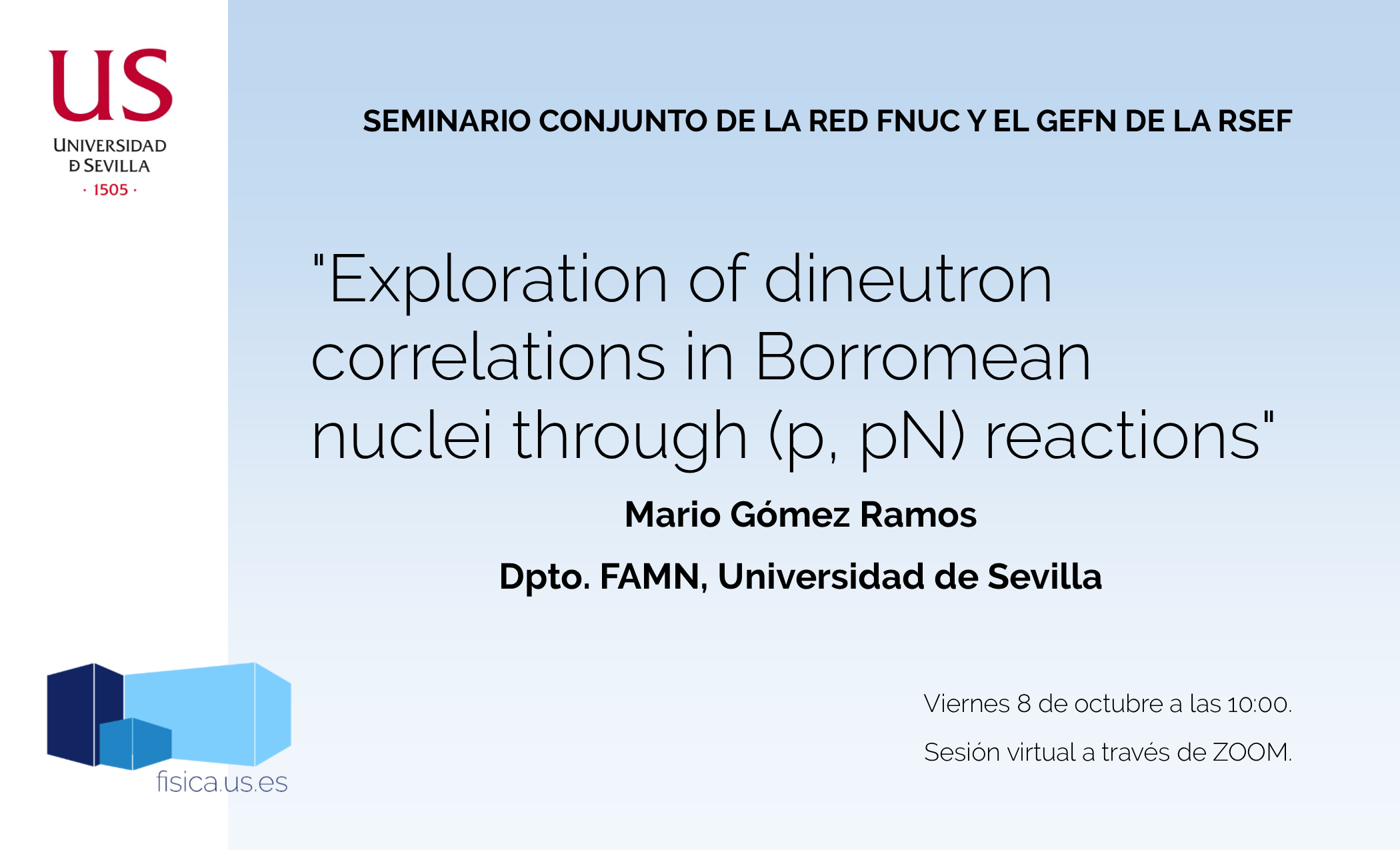Seminario conjunto de la red FNUC y el GEFN de la RSEF
 "Exploration of dineutron correlations in Borromean nuclei through (p, pN) reactions"
"Exploration of dineutron correlations in Borromean nuclei through (p, pN) reactions"
Mario Gómez Ramos
Dpto. Física Atómica Molecular y Nuclear - Universidad de Sevilla.
Viernes 8 de octubre a las 10:00.
Sesión virtual a través de ZOOM:
https://cern.zoom.us/j/61870885467?pwd=cWhDS0x3ek5oVUFXd0JCRmtpV1BkZz09
Abstract
Knockout reactions with proton targets provide an invaluable tool to access the properties of Borromean (core+N+N) nuclei, where the correlation between the two valence nucleons plays a fundamental role in binding the system. One of the questions of current interest is the importance of the dineutron (a pair of spatially correlated neutrons) in these correlations. Recently, experimental results for the average opening angle as a function of the intrinsic neutron momentum in the 11Li(p, pN) reaction have shown a localization of dineutron correlations on the nuclear surface. In this work we explore the dependence of this observable (the average opening angle) on the structure of the Borromean nucleus and the effects of distortion and absorption assuming a quasifree sudden model to describe the knockout process and a three-body model to describe the nucleus. We compare our results to the recent 11Li data and present predictions for the 19B and 17Ne nuclei, exploring the possibilities this observable presents to study the properties of Borromean nuclei.
Mario Gómez se doctoró en Física Nuclear en la Universidad de Sevilla en 2018. Tras la defensa y un contrato postdoctoral de un par de meses, trabajo en la Technische Universität Darmstadt con una Humboldt Fellowship durante dos años y en la actualidad trabaja como investigador postdoctoral en la Universidad de Sevilla. Su campo de especialización es el estudio teórico de reacciones nucleares directas a energías bajas e intermedias. En particular, está interesado en reacciones con blancos de protones, como las reacciones de knockout (p,pn), (p,2p) y (p,3p) o la reacción de transferencia (p,d). También trabaja en reacciones con núcleos poco exóticos poco ligados, entre los que cabe mencionar los núcleos halo y los núcleos Borromeos.






